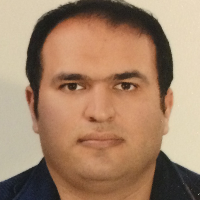Will Obstructive Sleep Apnea and Apnea/Hypopnea Index Be Corrected Following Alveolar Cleft Reconstruction?
Obstructive sleep apnea is a disorder of repetitive complete or partial airway obstruction during sleep. The aim of this study was to assess the impact of alveolar cleft reconstruction on the obstructive sleep apnea (OSA) condition and apnea/hypopnea index (AHI).
In a double-blinded prospective quasi-experimental study, all healthy systemic children (n=30 female cleft patients) with unilateral alveolar cleft defects within the age range of 8-14 years and BMI less than 30 kg/m2 who admitted for alveolar cleft repair were enrolled. OSA monitoring was performed one week before surgery, and 3 months postoperatively by Apnea Link device. Sleep apnea indices such as AHI, respiratory disturbance index (RDI), oxygen desaturation index (ODI) and oxyhemoglobin saturation (SpO2) as well as pulse rate (PR) and respiratory rate (RR) were the variables.
The patients’ mean age was 11.0±1.4 years, and BMI average was 21.48±4.4 kg/m2. Mean AHI was 21.6±5.0 events/hour, preoperatively; which decreased significantly and reached 4.4±2.5 events/hour after alveolar cleft reconstruction surgery (p=0.005). Moreover, the other OSA variables (SpO2, RDI, and ODI), as well as vital signs (PR, and RR) improved postoperatively (p=0.005). In other words, the preoperative moderate OSA status relieved after alveolar cleft repair and reconstruction.
Our study showed that the OSA and AHI ameliorated after bone graft surgery in alveolar cleft repair. More clinical trials including larger sample sizes may be required for relevancy.
-
Efficacy of Surgery-First Approach in the Management of Severe Skeletal Class III Malocclusion: A Case Report
Seyyed Hamidreza Aboutorabzadeh, Mahboobe Dehghani, Amirmohammad Moradpour, Ashkan Golabkesh Afshar, *
World Journal of Plastic Surgery, Sep 2024 -
Two Cases of COVID-Related Osteonecrosis of the Jaws: A New and Worrying Entity Is Emerging
Ricardo Grillo, *, Omid Alizadeh, Seyed Hossein Hosseini Zarch, Rozita Khodashahi, Navid Kazemian, Maria Da Graça Naclério-Homem
World Journal of Plastic Surgery, Jan 2024



